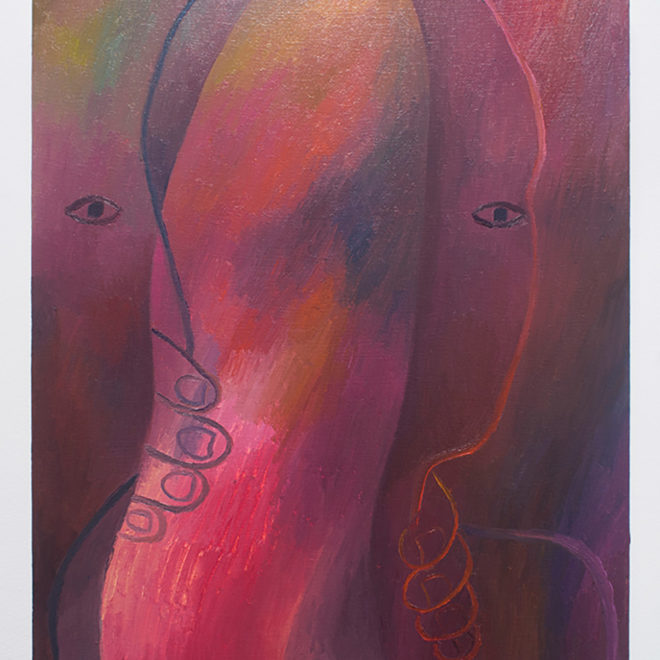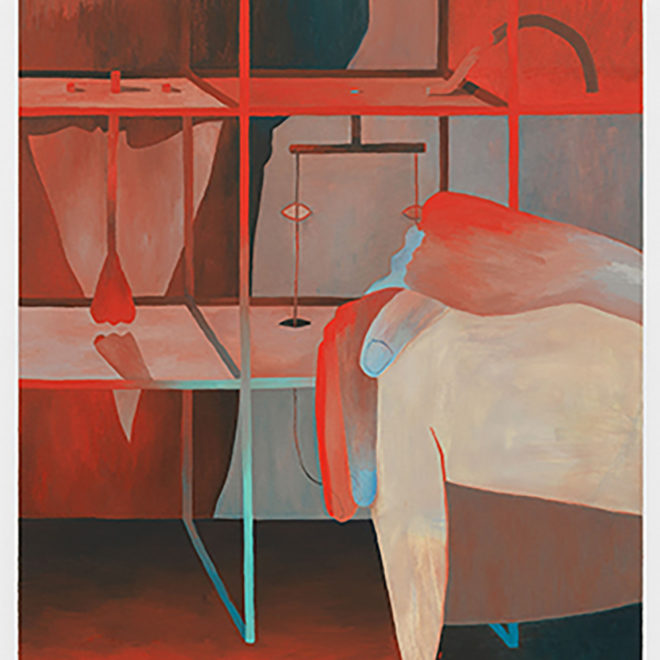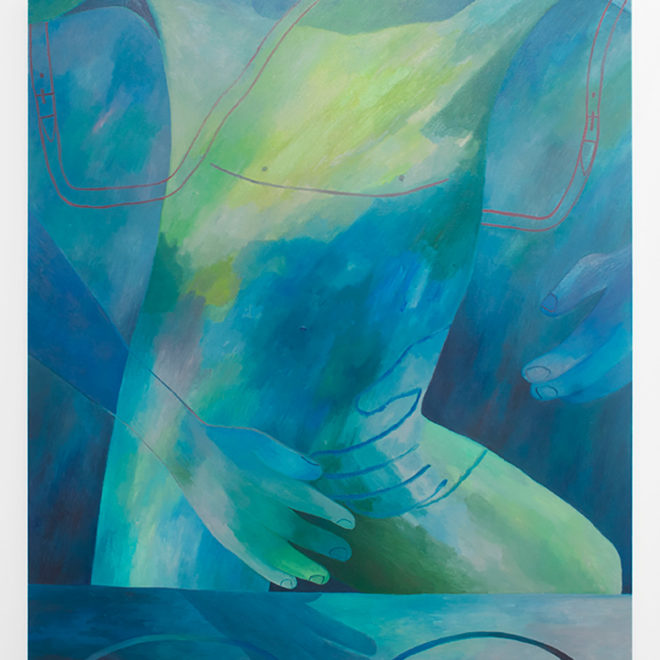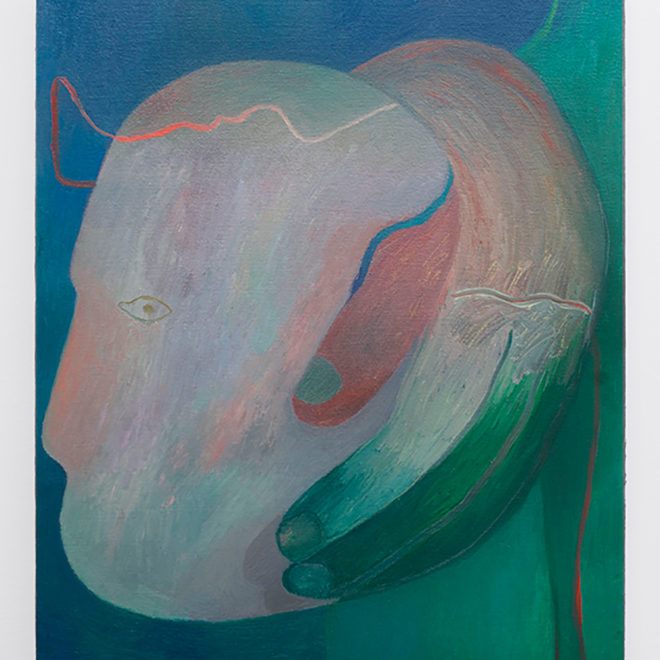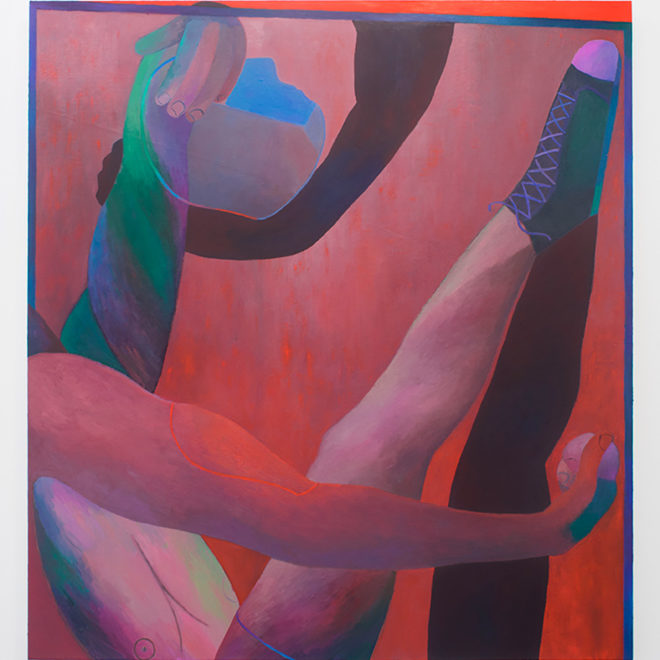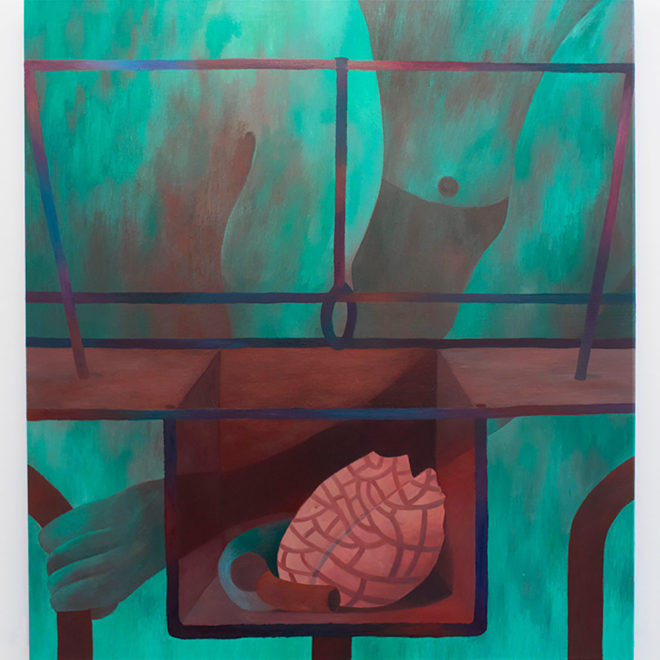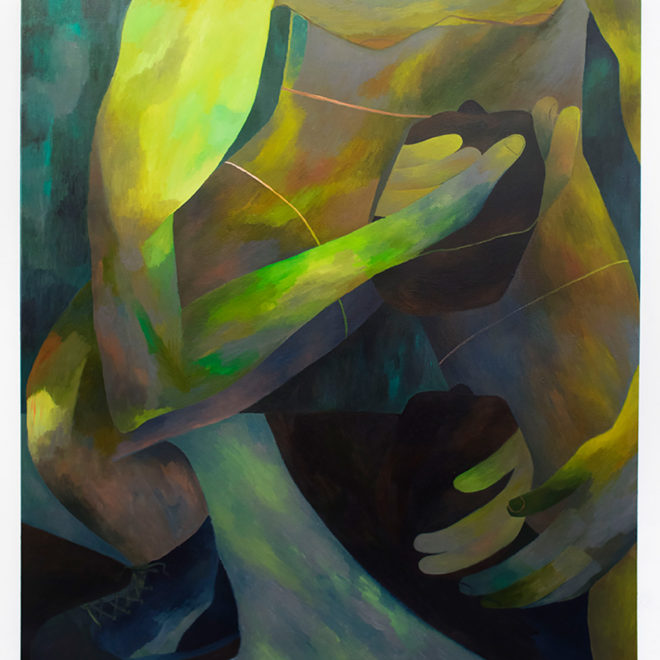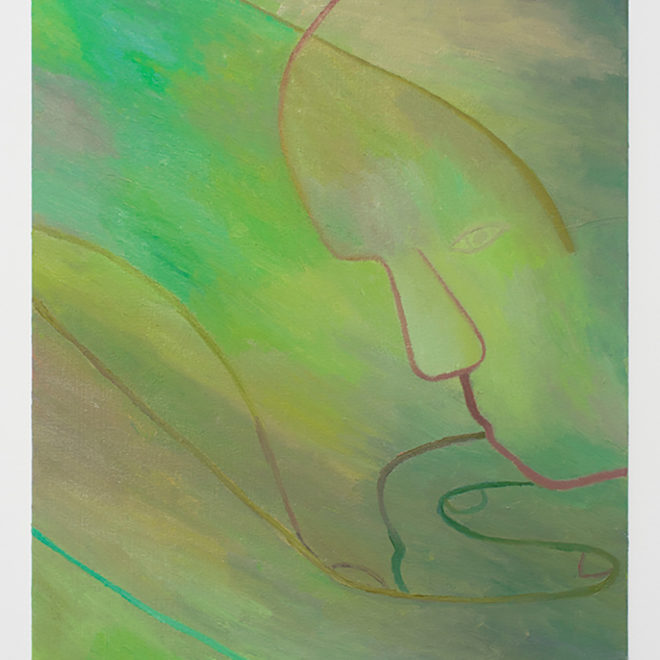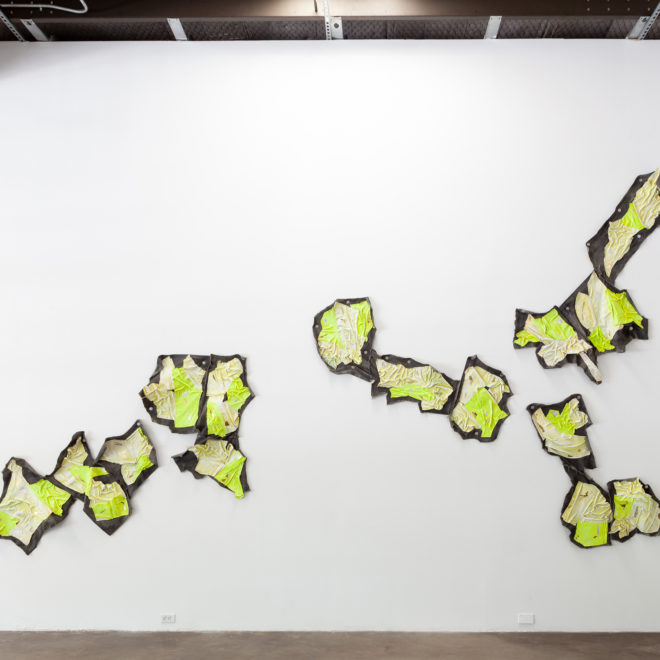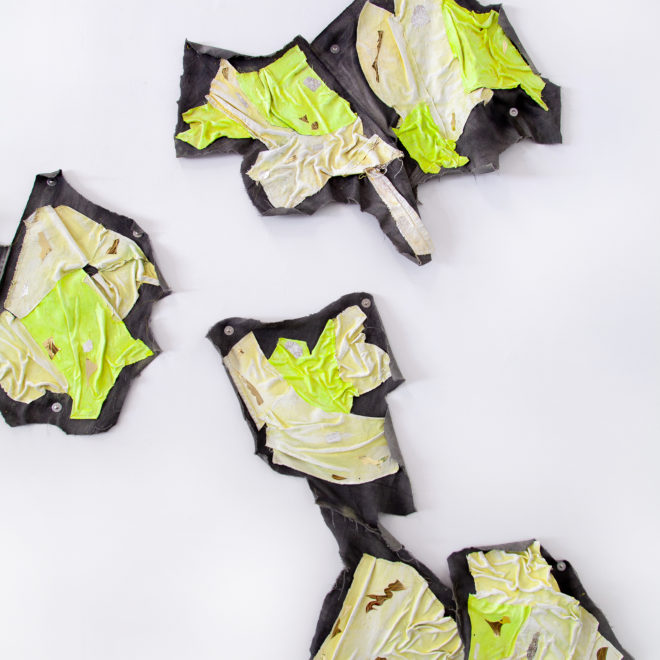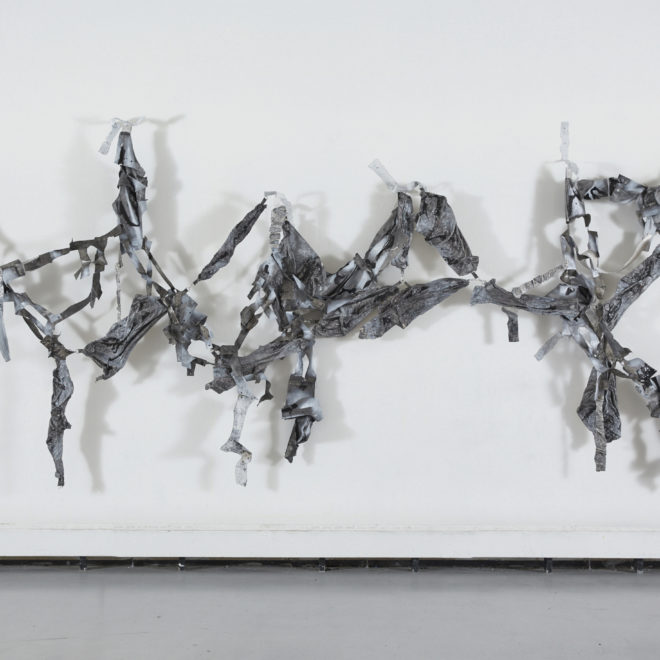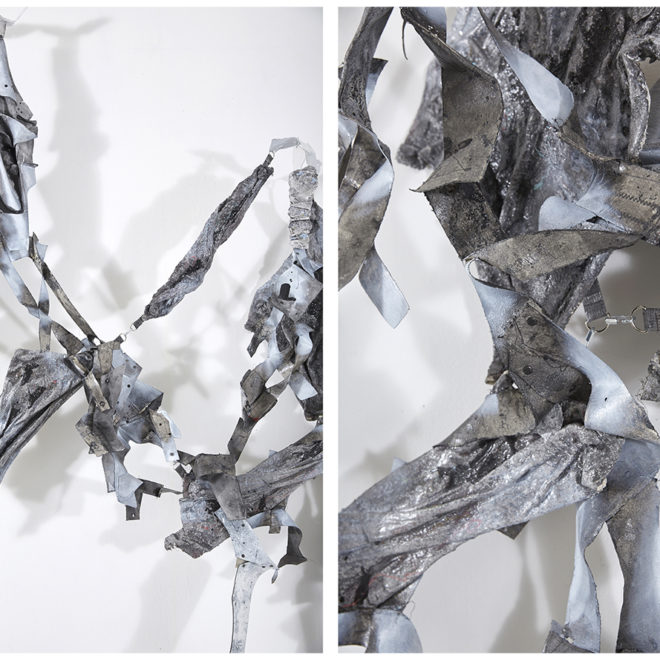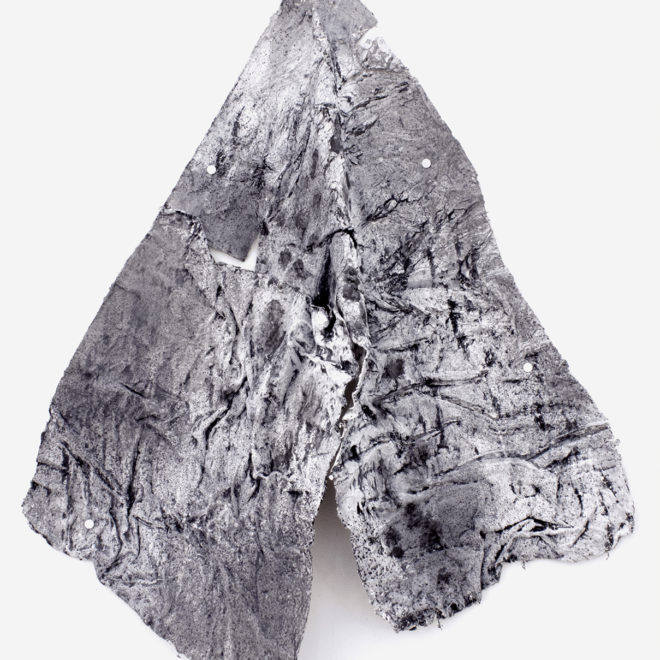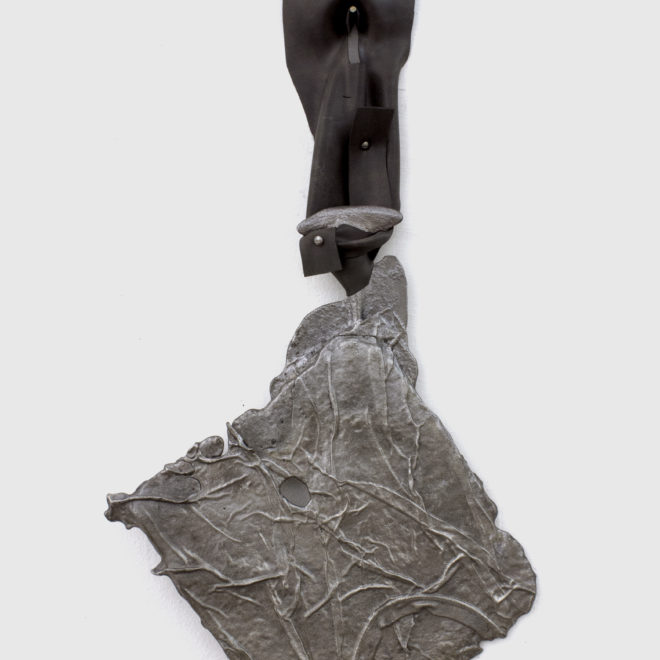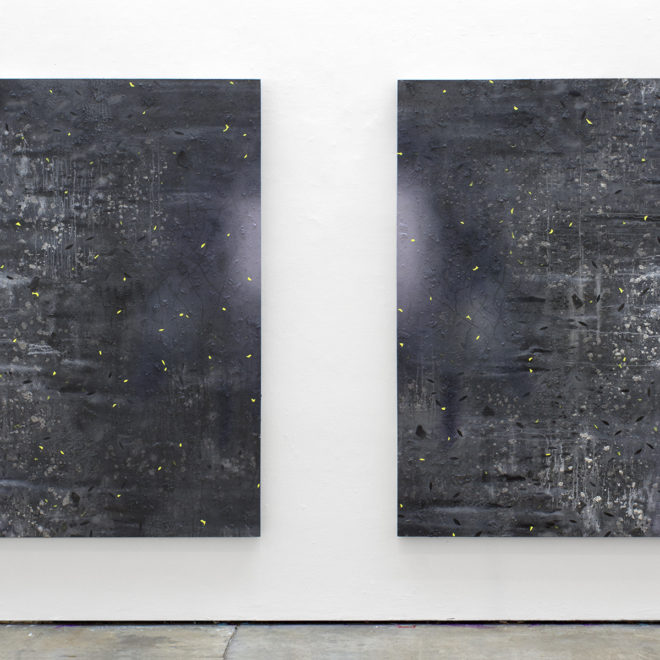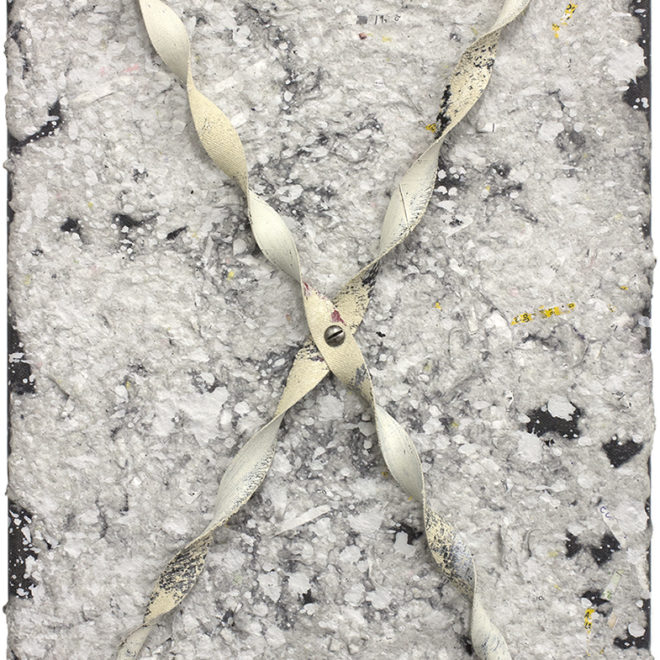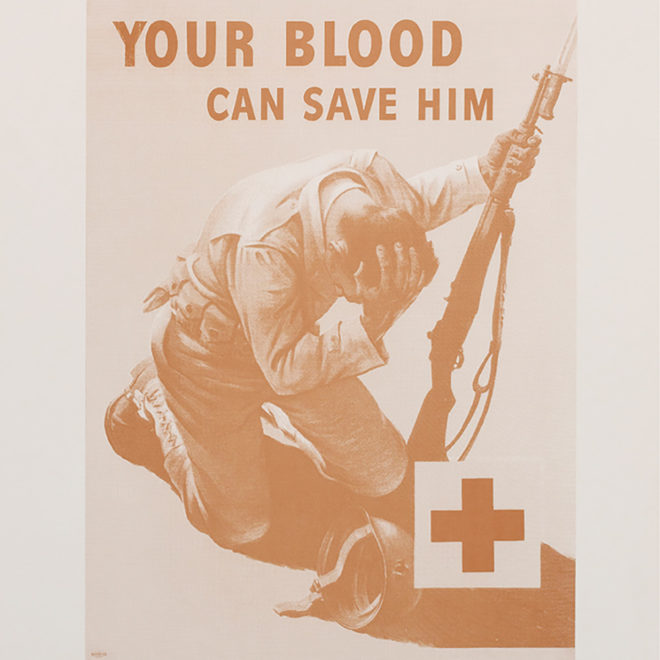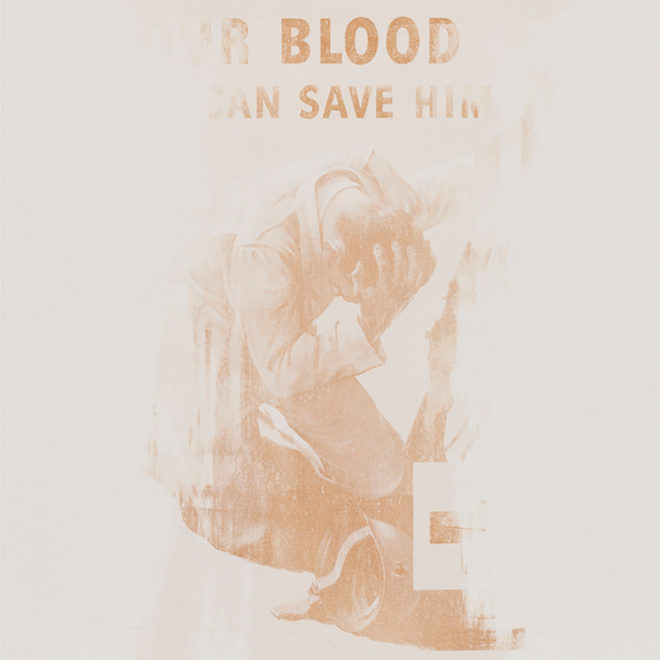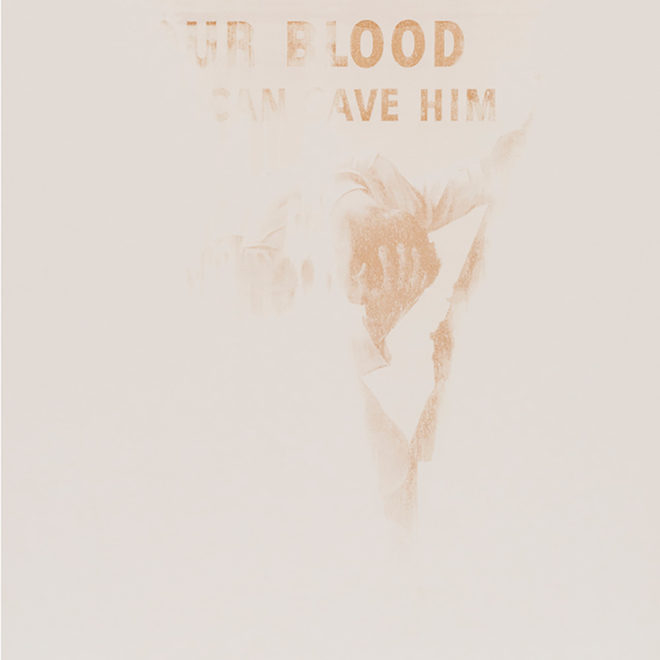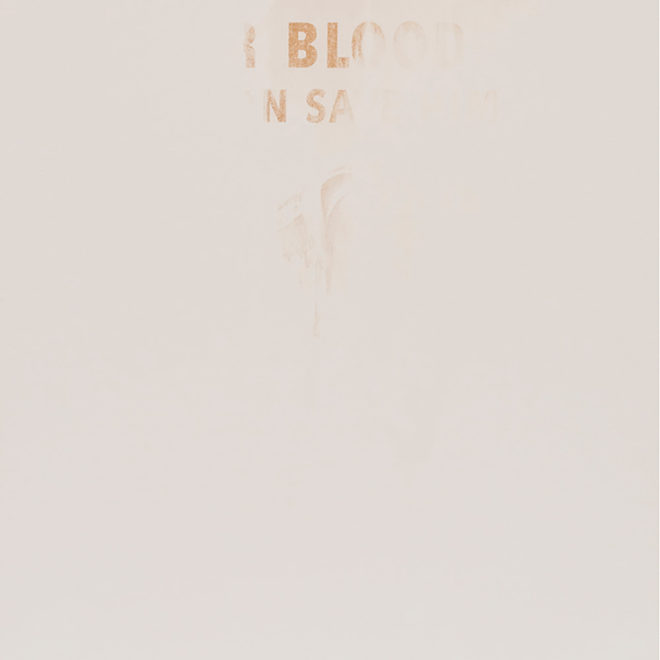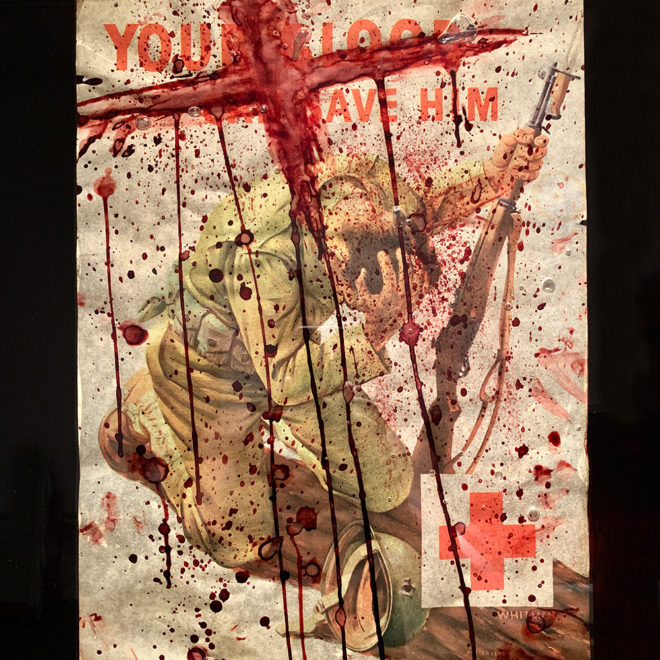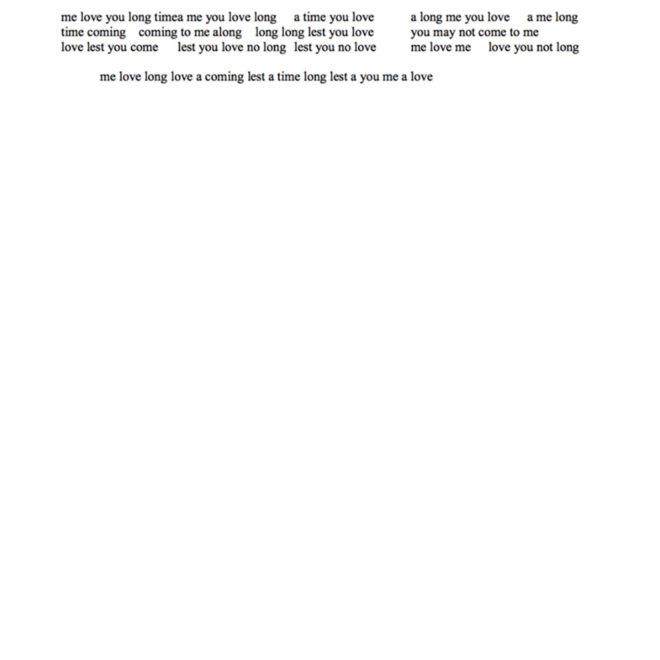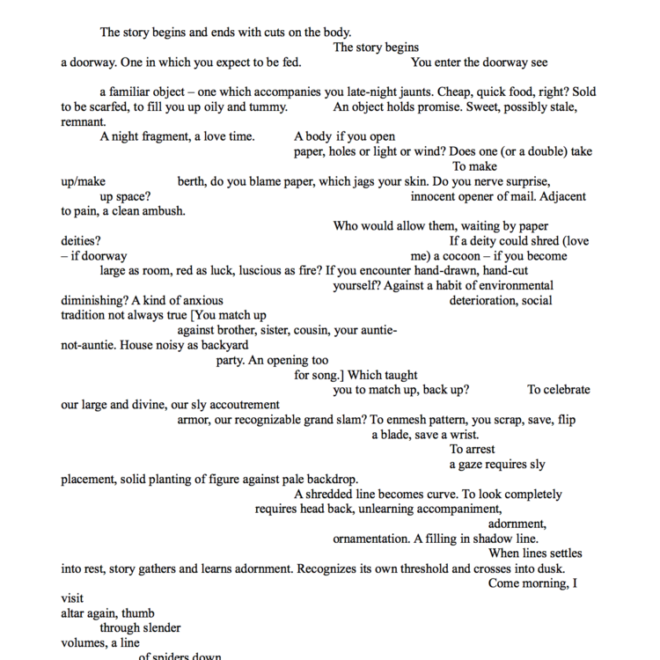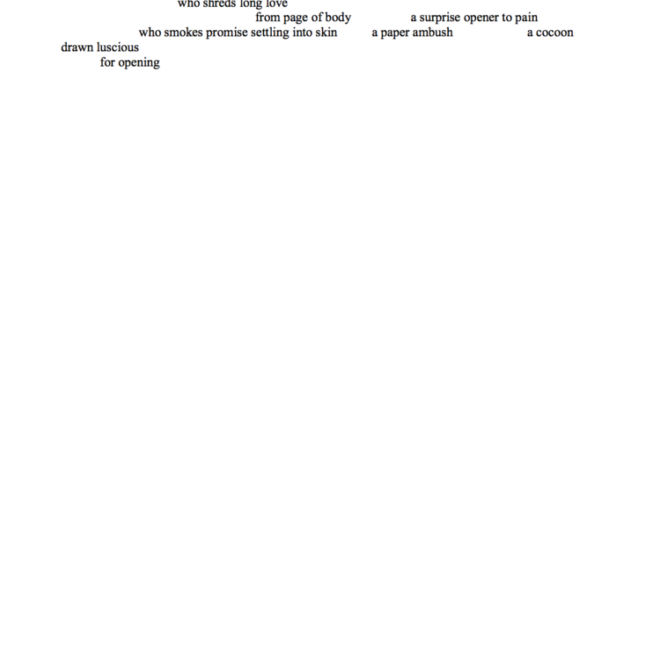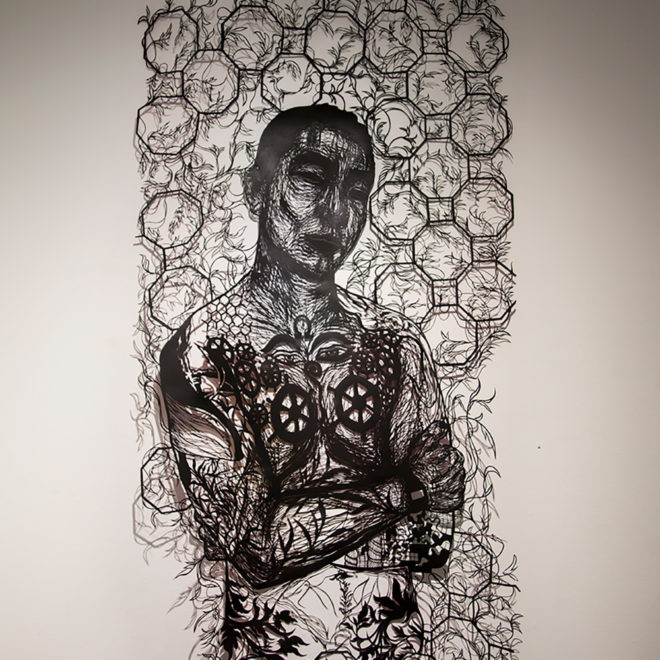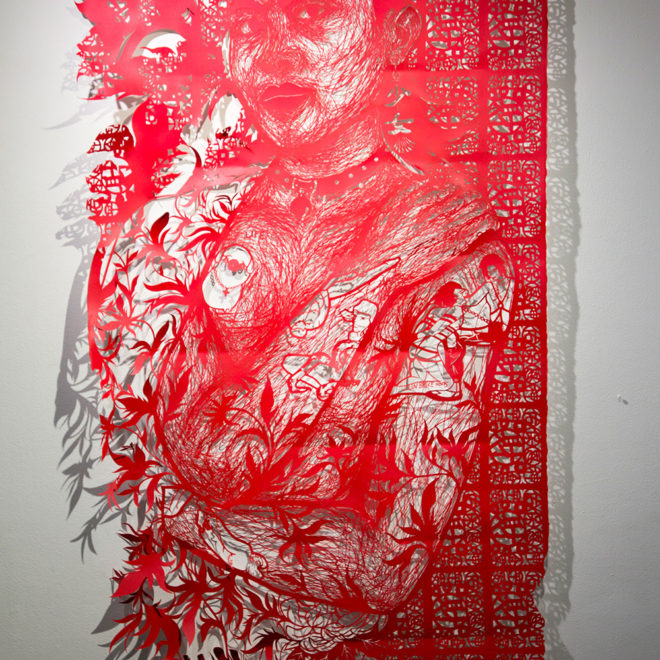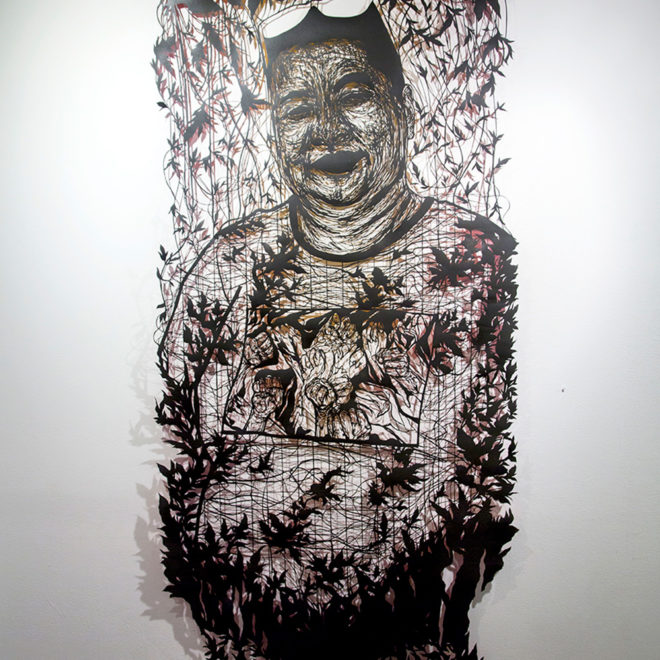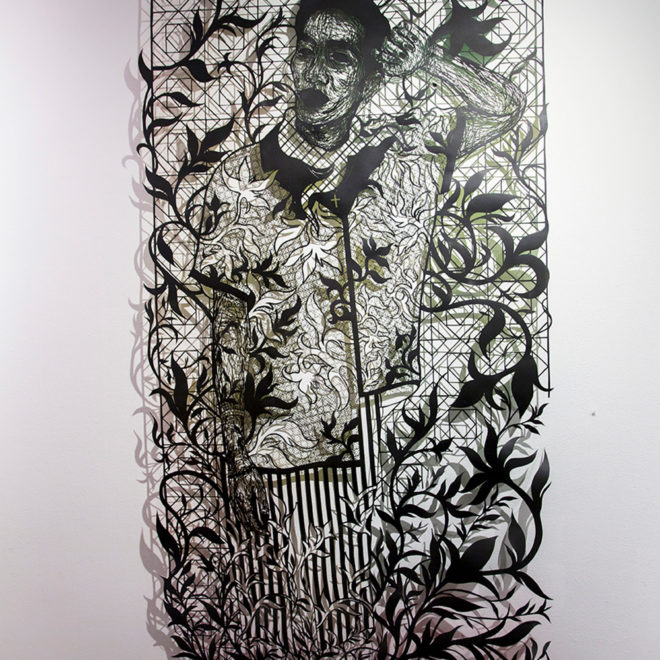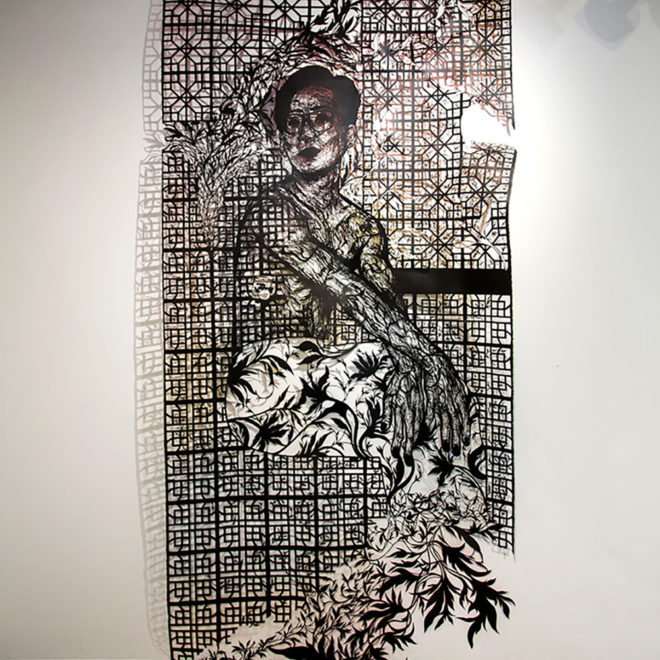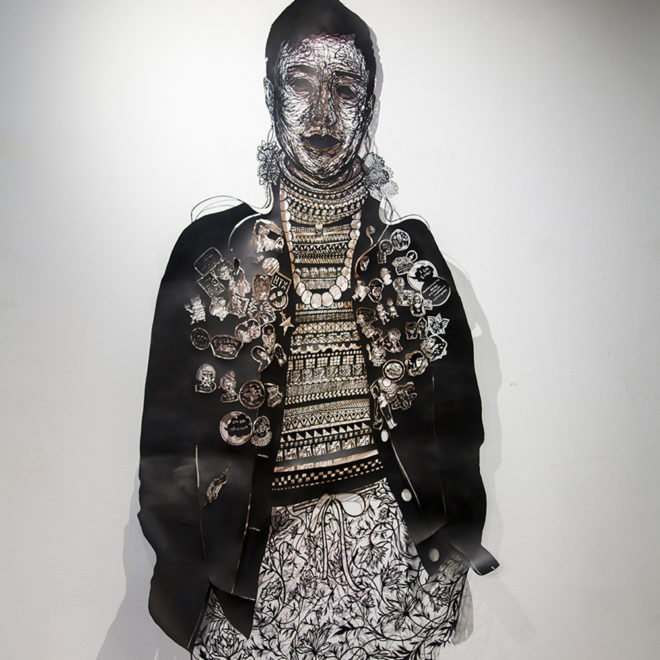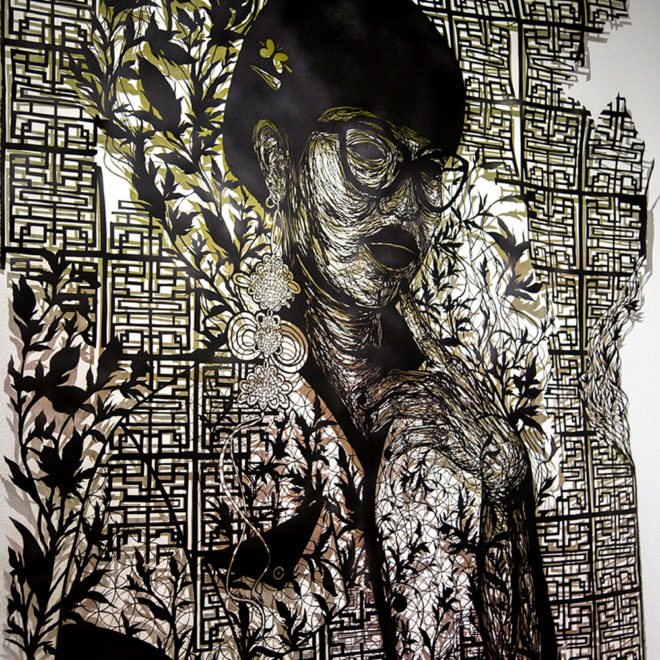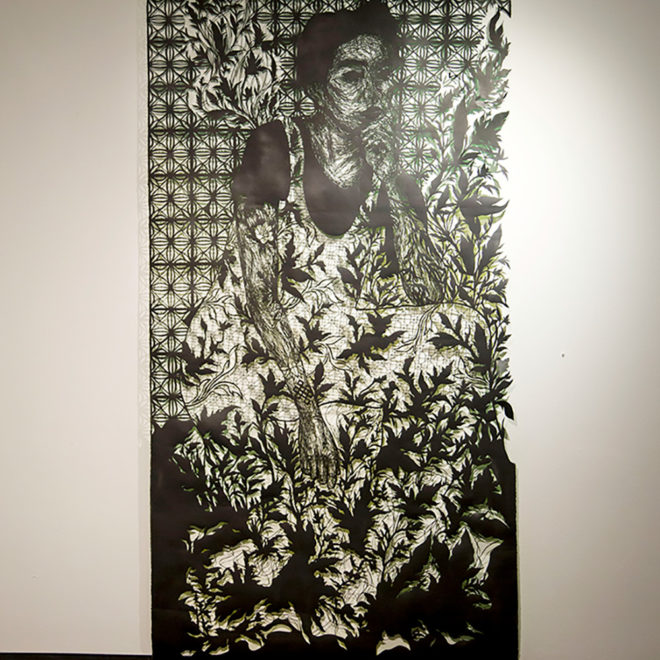Disclaimer:
Blog Entries by Melissa Gohlke
Trans Temporal: Finding Community across Generations
Austin Street, Ghostly Sentinel of San Antonio’s Queer Past
Derelict Spaces and Country Places: The Emergence of San Antonio’s Queer Community, 1940s-1970s
Blog Entries by Amy Stone
How Masculinity and Femininity are Treated Differently
On Intersex Representation
The Duchess of Cauliflower and Other Gender Bending Spectacles in the Alamo City
Additional Artwork
This online gallery includes work by artists not included in Transamerica/n. Artists whose work addresses issues related to gender, identity, and appearance will continue to be added to provide greater representation and to be seen within the context of the exhibition.
Antonius-Tín Bui (They/them) proudly identifies as a queer, gender-nonbinary, Vietnamese-American artist. They are the child of Paul and Van Bui, two Vietnamese refugees who sacrificed everything to provide a future for their four kids and extended family. Born and raised in Bronx, NY, Antonius eventually moved to Houston before pursuing a BFA at the Maryland Institute College of Art (MIC/A). Since graduating in 2016, Antonius has been fortunate to receive fellowships from the Vermont Studio Center, Kala Art Institute, Tulsa Artists Fellowship, Halcyon Arts Lab, Houston Center for Contemporary Craft, Yaddo, and Fine Arts Work Center. Thanks to these opportunities, they have greatly expanded their practice beyond just hand-cut paper techniques. They are currently interested in complicating Vietnamese history and queerness through performance, textiles, and photography. Antonius has exhibited at various institutional, private, public, and underground venues, including the Vietnam Veterans Memorial, Corcoran Gallery of Art, Hillyer Art Space, Lawndale Art Center, Living Arts, 108 Contemporary, Artscape, and Satellite Art Fair Austin.
“yêu em dài lâu is a series of life-size, hand-cut paper portraits that celebrate Queer AAPIs (Asian American Pacific Islanders) in my life. Stemming from a combination of interviews, photoshoots, friendships, and collaborations, these portraits are a testament to the resilience of my community. As a queer, gender-nonbinary, Vietnamese-American artist, I rarely ever see myself reflected in history and cultural institutions. These portraits recognize that absence, demanding to take up space in a still predominantly white, heteronormative, cisgender art world. When I am working on these hand-cut paper sculptures, I carve out space for histories that are actively forgotten and erased in this white supremacist nation. The reductive process deconstructs the white canvas, revealing more and more truths with every slice. I think about how my cut paper work can operate as a vehicle for uplifting queer and POC communities. The intensive, multi-dimensional qualities of my work are made possible by the folx who have trusted me with their portraits. Their experiences, interests, and talents inform the way I sculpt the paper, breathing life into the work. I definitely wouldn’t be the artist and human I am today without all the queer, womxn, and BIPOC identifying people who inspire me everyday.”
— Antonius-Tín Bui
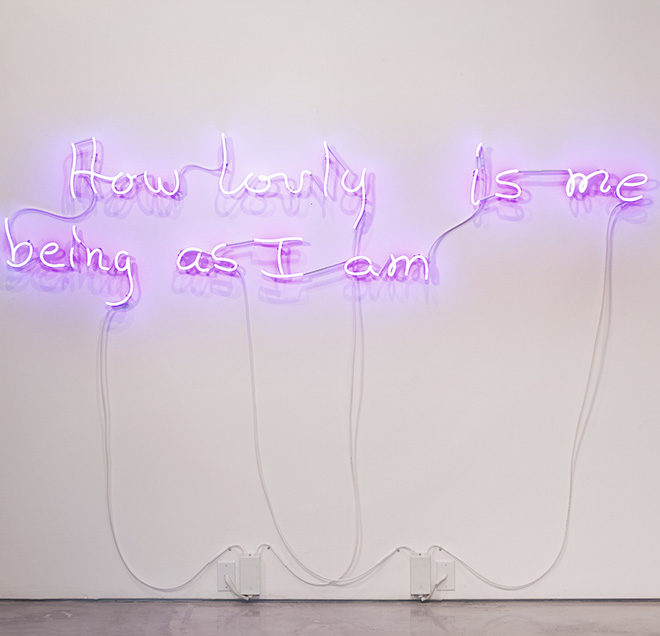
Jacolby Satterwhite, How lovly is me being as I am, 2014. Neon. Courtesy of the artist and Morán Morán, Los Angeles. © Jacolby Satterwhite
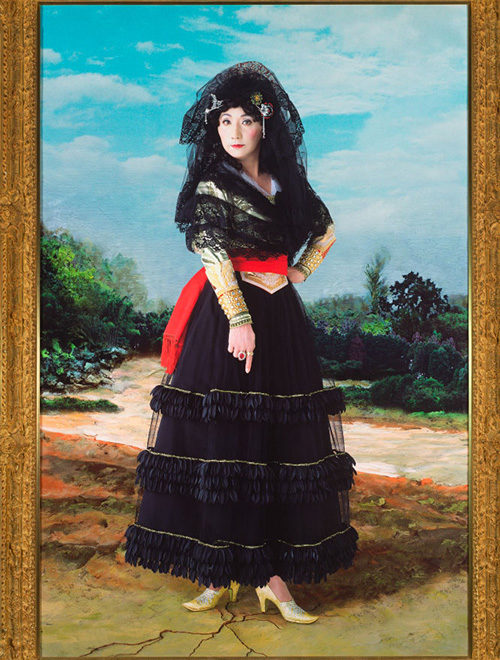
Yasumasa Morimura, Dedicated to La Duquesa de Alba/Black Alba, 2004. Chromogenic print mounted on canvas. Collection of the McNay Art Museum, Museum purchase with funds from the McNay Contemporary Collectors Forum. © 2019 Yasumasa Morimura
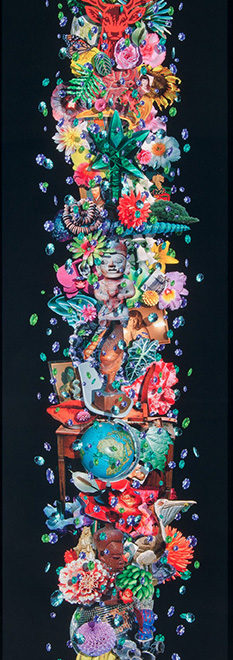
Carlos Betancourt, Totem for Light I (Carlos), 2009. Digital print. Collection of the McNay Art Museum, Museum purchase with funds from Barbara and Harvey Goldstein. © 2019 Carlos Betancourt
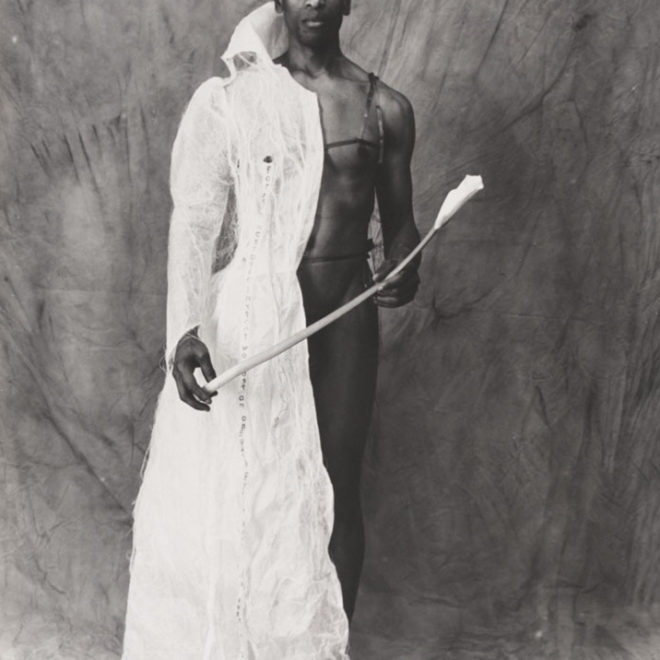
Lesley Dill, Poem Dress for a Hermaphrodite, 1995. Gelatin silver print. Courtesy of the artist and Nohra Haime Gallery, New York. © 2019 Lesley Dill
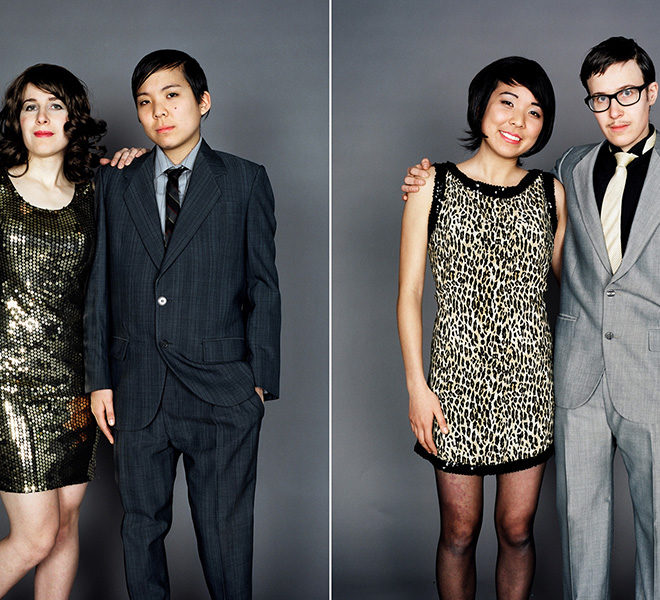
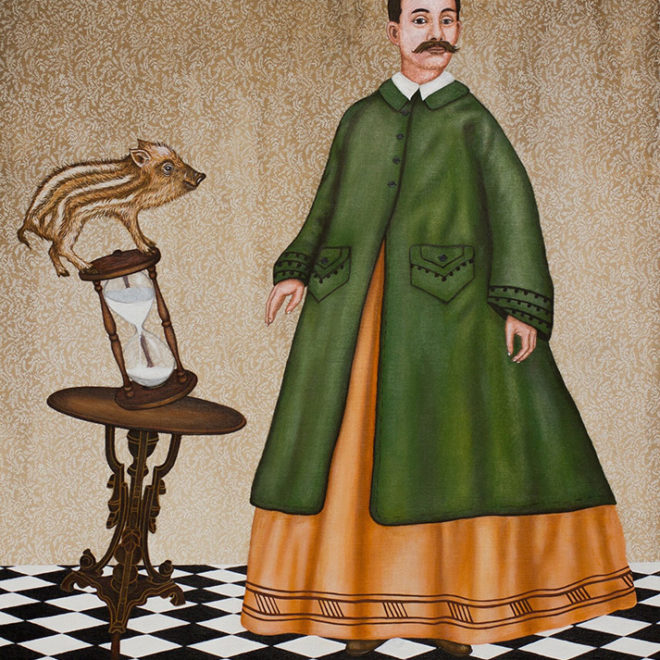
Lezley Saar, The Silent Woman, 2015. Acrylic on fabric on panel. Courtesy of the artist and Walter Maciel Gallery, Los Angeles. Photograph by August Augustsson. © 2019 Lezley Saar
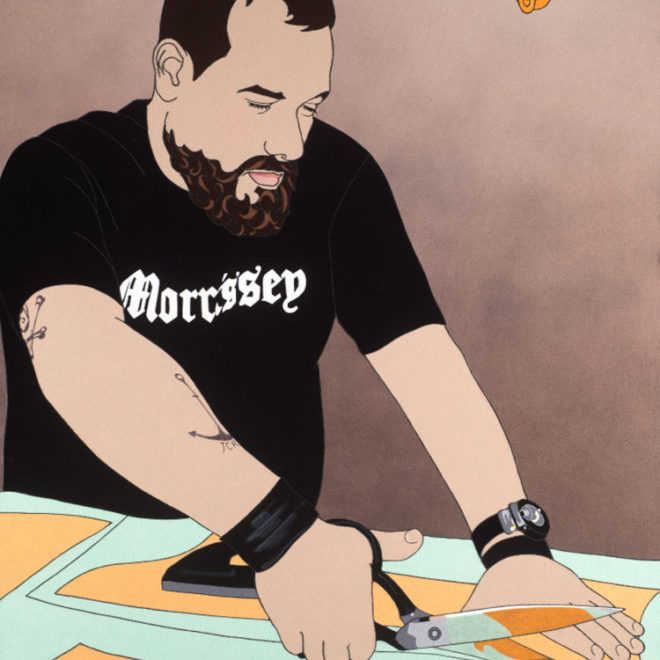
James Gobel, Robert, 2007. Felt, yarn, thread, and acrylic on canvas. Collection of the McNay Art Museum, Museum purchase with funds from the McNay Contemporary Collectors Forum. © 2019 James Gobel
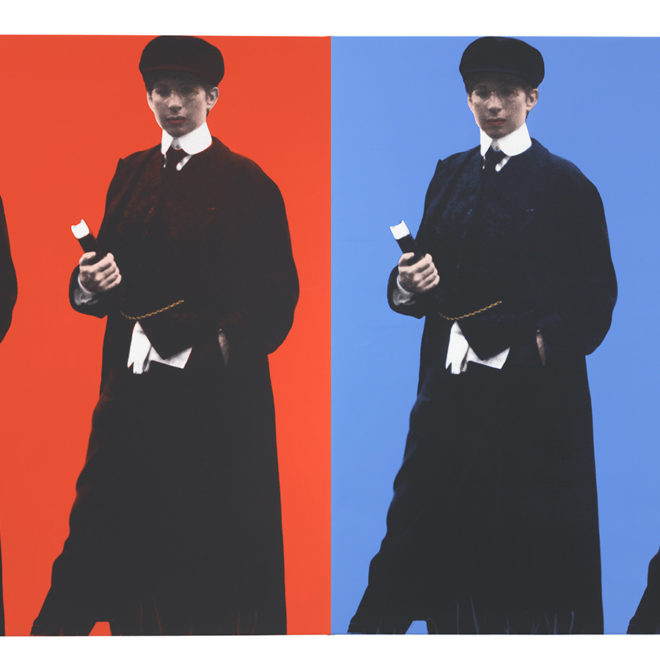
Deborah Kass, Double Double Yentl (My Elvis), 1993. Silkscreen and acrylic on canvas. Courtesy of the artist. © 2019 Deborah Kass / Artists Rights Society (ARS), New York
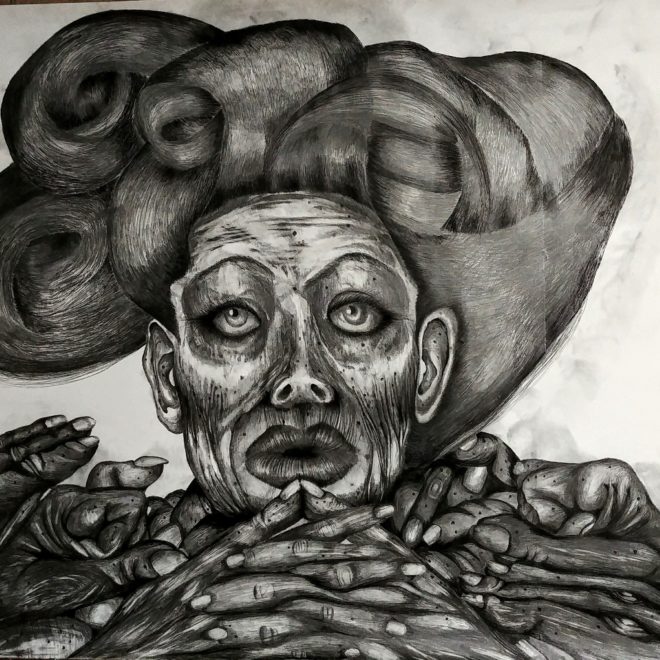
Roey Victoria Heiftez, Anxiety, My Love!, 2018. Graphite, charcoal, and ink on paper. Courtesy of the artist and Israeli Art in Los Angeles. © 2019 Roey Victoria Heiftez
Ching-In Chen (They/them) is the author of The Heart’s Traffic (Arktoi/Red Hen Press, 2009) and recombinant (Kelsey Street Press, 2017). Born of Chinese immigrants, they are a Kundiman, Lambda, Callaloo and Watering Hole Fellow and a member of the Macondo and Voices of Our Nations Arts Foundations writing communities. A community organizer, they have worked in the Asian American communities of San Francisco, Oakland, Riverside and Boston, as well as helped organize the third national Asian Pacific American Spoken Word and Poetry Summit in Boston. Chen is also the co-editor of The Revolution Starts at Home: Confronting Intimate Violence Within Activist Communities (South End Press, 2011) and Here Is a Pen: an Anthology of West Coast Kundiman Poets (Achiote Press, 2009). A graduate of Tufts University, they earned an MFA in Creative Writing and Writing for the Performing Arts from the University of California, Riverside and a PhD at the University of Wisconsin Milwaukee. They currently teach creative writing at Sam Houston State University, where they are a poetry editor for the Texas Review.
“I was invited by Lawndale Art Center to write an essay in response to Antonius Bui’s show, yêu em dài lâu (me love you long time).The show features Bui’s beautiful life-sized papercuts of Asian American LGBTQI* activists, including one of myself. I was honored and excited to respond in lyric essay, but when it came time to produce, I found it challenging to respond because I was bodily implicated in the show. In the first draft, I used the words in the title to generate an entry point (“me long you love time”) into a yearning to belong, to situate myself into the kind of community Bui’s work helps to dream into solid, material shape.”
— Ching-In Chen

Jacolby Satterwhite, How lovly is me being as I am, 2014. Neon. Courtesy of the artist and Morán Morán, Los Angeles. © Jacolby Satterwhite

Yasumasa Morimura, Dedicated to La Duquesa de Alba/Black Alba, 2004. Chromogenic print mounted on canvas. Collection of the McNay Art Museum, Museum purchase with funds from the McNay Contemporary Collectors Forum. © 2019 Yasumasa Morimura

Carlos Betancourt, Totem for Light I (Carlos), 2009. Digital print. Collection of the McNay Art Museum, Museum purchase with funds from Barbara and Harvey Goldstein. © 2019 Carlos Betancourt

Lesley Dill, Poem Dress for a Hermaphrodite, 1995. Gelatin silver print. Courtesy of the artist and Nohra Haime Gallery, New York. © 2019 Lesley Dill


Lezley Saar, The Silent Woman, 2015. Acrylic on fabric on panel. Courtesy of the artist and Walter Maciel Gallery, Los Angeles. Photograph by August Augustsson. © 2019 Lezley Saar

James Gobel, Robert, 2007. Felt, yarn, thread, and acrylic on canvas. Collection of the McNay Art Museum, Museum purchase with funds from the McNay Contemporary Collectors Forum. © 2019 James Gobel

Deborah Kass, Double Double Yentl (My Elvis), 1993. Silkscreen and acrylic on canvas. Courtesy of the artist. © 2019 Deborah Kass / Artists Rights Society (ARS), New York

Roey Victoria Heiftez, Anxiety, My Love!, 2018. Graphite, charcoal, and ink on paper. Courtesy of the artist and Israeli Art in Los Angeles. © 2019 Roey Victoria Heiftez
Jordan Eagles (He/him) is a New York based artist working in painting, sculpture and installation, with blood and resin as the central materials. His projectscreated with donated blood from the LGBTQ+ community advocate for fair blood donation policy, anti-stigma and full equality. Eagles’ exhibitions and public programs include the Museum of the City of New York, Leslie-Lohman Museum of Gay and Lesbian Art (New York), Birmingham Civil Rights Institute, Hammer Museum (Los Angeles), the High Line (New York), Trinity Wall Street (New York), American University Museum (Washington, DC), Boston Center for the Arts and the Everson Museum (Syracuse). His works are held in numerous private and public collections including the Addison Gallery of American Art, Peabody Essex Museum, Princeton University Art Museum, The Rose Art Museum, University of Michigan Museum of Art, the Museum of Sex and The Wellcome Collection. Eagles has collaborated with the NYC Department of Health and Mental Hygiene and he is a co-founder of Blood Equality thatwas launched in partnership with GMHC and FCB Health.
In the early 1940’s, Dr. Charles R. Drew, a prominent African American surgeon, developed blood storage techniques as part of a successful program to collect blood in New York City hospitals and export the plasma to the Allied forces in Europe during WWII. Dr. Drew eventually resigned his position in protest of racial segregation of blood. Artist Jordan Eagles engages this history to examine equality issues through policies of historic prejudice that are still being perpetrated against the LGBTQ+ community today. The FDA’s blood donation policy, instituted in 1983, in an early response to the AIDS crisis and updated in 2015, still bans gay and bisexual men from donating blood unless they are celibate for a full year. There is no celibacy requirement for heterosexuals. A recent UCLA Williams Institute study found that lifting the ban completely could save up to a million lives annually. Eagles’ work, OUR BLOOD CAN SAVE THEM, considers racial equality, LGBTQ+ equality, and equality for all people, and correlates these concepts to those individuals willing to sacrifice and share of themselves in service to their country and to help save lives in their communities. Past racial segregation of blood donations and current discriminatory policies – such as the FDA’s blood ban and the recently-implemented transgender military ban – undermine our country’s wellness and preparedness. This project aims to express the wasted potential created by ignoring and discriminating against certain groups, while also recognizing the common humanity in all of us.

Jacolby Satterwhite, How lovly is me being as I am, 2014. Neon. Courtesy of the artist and Morán Morán, Los Angeles. © Jacolby Satterwhite

Yasumasa Morimura, Dedicated to La Duquesa de Alba/Black Alba, 2004. Chromogenic print mounted on canvas. Collection of the McNay Art Museum, Museum purchase with funds from the McNay Contemporary Collectors Forum. © 2019 Yasumasa Morimura

Carlos Betancourt, Totem for Light I (Carlos), 2009. Digital print. Collection of the McNay Art Museum, Museum purchase with funds from Barbara and Harvey Goldstein. © 2019 Carlos Betancourt

Lesley Dill, Poem Dress for a Hermaphrodite, 1995. Gelatin silver print. Courtesy of the artist and Nohra Haime Gallery, New York. © 2019 Lesley Dill


Lezley Saar, The Silent Woman, 2015. Acrylic on fabric on panel. Courtesy of the artist and Walter Maciel Gallery, Los Angeles. Photograph by August Augustsson. © 2019 Lezley Saar

James Gobel, Robert, 2007. Felt, yarn, thread, and acrylic on canvas. Collection of the McNay Art Museum, Museum purchase with funds from the McNay Contemporary Collectors Forum. © 2019 James Gobel

Deborah Kass, Double Double Yentl (My Elvis), 1993. Silkscreen and acrylic on canvas. Courtesy of the artist. © 2019 Deborah Kass / Artists Rights Society (ARS), New York

Roey Victoria Heiftez, Anxiety, My Love!, 2018. Graphite, charcoal, and ink on paper. Courtesy of the artist and Israeli Art in Los Angeles. © 2019 Roey Victoria Heiftez
Leslie Martinez (They/them) is a Dallas-based multidisciplinary artist born and raised between The Rio Grande Valley of the South Texas-Mexican border and Dallas, Texas. They hold an MFA from Yale School of Art in New Haven, Connecticut (2018) and a BFA from The Cooper Union for the Advancement of Science and Art in New York City (2008). In the decade between, they worked as a graphic designer in New York City’s apparel industry where computer-aided design and garment construction profoundly influenced new ideas around image/object construction and abstraction. Martinez recently concluded a studio residency at Museum of Contemporary Art Tucson where they began a new body of work for an upcoming solo show in Dallas and their first museum show next year at Phoenix Art Museum.
The core interest of Leslie Martinez’s work lies in the ontological parallels between transgender subjectivity and ‘border consciousness’ – in the sense that these seemingly separate sites and subject positions contend with highly policed boundaries of perpetual imagination, transgression, and self-negation. How human beings become abstractions through historical attitudes and policies rooted in violent fear and hatred, correlates with the language and material processes of image/object-construction within the context of art making. Terms and concepts common between queerness and the border like belonging and dis-belonging, surveillance, passing, masking, and assimilation emerge subtly over time within the work through processes of material transformation that blur and resist arbitrary boundaries of definitive identification and categorization. In the work Martinez is developing now, queerness and trans-ness extend beyond gender and sexuality, reaching into the uncanny materiality and exuberant color of the borderlands. Found materials and the fragmented byproducts of past works are envisioned far in advance as potentially useful, folding their way into future forms. The economic and ecological nature of ideas around material embodiment, reconfiguration, and a self-consuming practice evokes the spiritual transformation and future-oriented desires present along the queer margins of bodies, nations, realities, and imaginations.

Jacolby Satterwhite, How lovly is me being as I am, 2014. Neon. Courtesy of the artist and Morán Morán, Los Angeles. © Jacolby Satterwhite

Yasumasa Morimura, Dedicated to La Duquesa de Alba/Black Alba, 2004. Chromogenic print mounted on canvas. Collection of the McNay Art Museum, Museum purchase with funds from the McNay Contemporary Collectors Forum. © 2019 Yasumasa Morimura

Carlos Betancourt, Totem for Light I (Carlos), 2009. Digital print. Collection of the McNay Art Museum, Museum purchase with funds from Barbara and Harvey Goldstein. © 2019 Carlos Betancourt

Lesley Dill, Poem Dress for a Hermaphrodite, 1995. Gelatin silver print. Courtesy of the artist and Nohra Haime Gallery, New York. © 2019 Lesley Dill


Lezley Saar, The Silent Woman, 2015. Acrylic on fabric on panel. Courtesy of the artist and Walter Maciel Gallery, Los Angeles. Photograph by August Augustsson. © 2019 Lezley Saar

James Gobel, Robert, 2007. Felt, yarn, thread, and acrylic on canvas. Collection of the McNay Art Museum, Museum purchase with funds from the McNay Contemporary Collectors Forum. © 2019 James Gobel

Deborah Kass, Double Double Yentl (My Elvis), 1993. Silkscreen and acrylic on canvas. Courtesy of the artist. © 2019 Deborah Kass / Artists Rights Society (ARS), New York

Roey Victoria Heiftez, Anxiety, My Love!, 2018. Graphite, charcoal, and ink on paper. Courtesy of the artist and Israeli Art in Los Angeles. © 2019 Roey Victoria Heiftez
Zoe Avery Nelson (They/them) was born in Rhinebeck, NY and received an MFA from Columbia University. They have mounted solo exhibitions at The Ice House, Garrison, NY (2018); The Lighthouse Works Gallery, Fishers Island, NY (2017); Cleve Carney Art Gallery, Glen Ellyn, IL (2015); Western Exhibitions, Chicago, IL (2014); and a two-person exhibition with Judy Ledgerwood at Practise, Oak Park, IL (2017). Nelson’swork has been included in group exhibitions at 1969 Gallery, New York, NY; Greenpoint Terminal Gallery, Brooklyn, NY; Fresh Window Gallery, Brooklyn, NY; Durden and Ray, Los Angeles, CA; and numerous Chicago-based galleries including South of the Tracks Projects, LVL3 Gallery, and O’Connor Art Gallery at Dominican University, among others. They have received press in ARTFORUM, Huffington Post, Bad at Sports, Newcity, ArtMaze, and New American Paintings.
In a series that explores the temporality of inhabiting/being a body, Zoe Avery Nelson’s work moves within and outside the symbolic, through fragmentation, contradiction, and tension. A structured tension of desire and absence – desire for a form of the body that would be fluid and habitable – yields to a movement in which anything can become any other body part. Zoe Avery is also inspired by the euphoria of techno which synthesizes music and the self to create third spaces where the body becomes a portal for new possibilities. They are interested in upending stable materials, such as the subversion of the industrial spaces (once utilitarian) which become hosts to dancing techno crowds until the temporal notions of night and day becomes blurred. The exterior physical self manifests the fluid interior life and vice versa in a recursive bind as Zoe Avery explores the constructing of the self. The form of a body is always an imagined thing; it is in and as fantasy (and painting), that the desiring body is apprehended and lived.

Jacolby Satterwhite, How lovly is me being as I am, 2014. Neon. Courtesy of the artist and Morán Morán, Los Angeles. © Jacolby Satterwhite

Yasumasa Morimura, Dedicated to La Duquesa de Alba/Black Alba, 2004. Chromogenic print mounted on canvas. Collection of the McNay Art Museum, Museum purchase with funds from the McNay Contemporary Collectors Forum. © 2019 Yasumasa Morimura

Carlos Betancourt, Totem for Light I (Carlos), 2009. Digital print. Collection of the McNay Art Museum, Museum purchase with funds from Barbara and Harvey Goldstein. © 2019 Carlos Betancourt

Lesley Dill, Poem Dress for a Hermaphrodite, 1995. Gelatin silver print. Courtesy of the artist and Nohra Haime Gallery, New York. © 2019 Lesley Dill


Lezley Saar, The Silent Woman, 2015. Acrylic on fabric on panel. Courtesy of the artist and Walter Maciel Gallery, Los Angeles. Photograph by August Augustsson. © 2019 Lezley Saar

James Gobel, Robert, 2007. Felt, yarn, thread, and acrylic on canvas. Collection of the McNay Art Museum, Museum purchase with funds from the McNay Contemporary Collectors Forum. © 2019 James Gobel

Deborah Kass, Double Double Yentl (My Elvis), 1993. Silkscreen and acrylic on canvas. Courtesy of the artist. © 2019 Deborah Kass / Artists Rights Society (ARS), New York

Roey Victoria Heiftez, Anxiety, My Love!, 2018. Graphite, charcoal, and ink on paper. Courtesy of the artist and Israeli Art in Los Angeles. © 2019 Roey Victoria Heiftez


